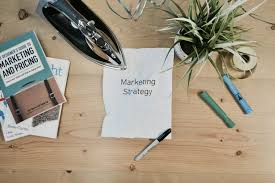In the fast-paced world of digital marketing, businesses are continually looking for ways to stand out from the competition. While organic methods like SEO and content marketing are effective, they often take time to show results. On the other hand, paid campaigns offer a more immediate way to boost visibility, drive traffic, and ultimately increase sales. Whether you’re a small business or an established brand, paid campaigns can supercharge your marketing efforts, delivering measurable outcomes and a significant return on investment (ROI).
In this article, we’ll explore how to leverage paid campaigns to elevate your business, with insights on various types of paid advertising and strategies for maximizing their impact.
What Are Paid Campaigns?
Paid campaigns, also known as paid advertising or pay-per-click (PPC) campaigns, refer to any form of digital advertising where you pay to display ads to your target audience. This includes search engine ads, social media ads, display ads, and more. These campaigns are designed to drive traffic to your website, promote specific products, or generate leads.
Paid campaigns differ from organic marketing methods in that they provide instant visibility and results. While organic efforts take time to build, paid campaigns allow you to reach potential customers right away and appear at the top of search results or on social media feeds.
Why Paid Campaigns are Essential for Your Business
- Immediate Results: Unlike SEO, which takes time to show tangible results, paid campaigns can drive traffic to your website as soon as they’re launched. This immediacy is crucial, especially for businesses that need to generate quick leads or sales.
- Targeted Reach: One of the biggest advantages of paid campaigns is the ability to precisely target your audience. You can customize your ads based on demographics, location, interests, and even online behaviors. This ensures that your marketing budget is spent only on the people most likely to convert.
- Scalability: Paid campaigns can easily be scaled to meet the demands of your business. Whether you want to run a small campaign or a large-scale advertising blitz, paid advertising offers flexibility to adjust your budget and ad placement based on your goals.
- Brand Awareness: Running paid campaigns increases your brand’s visibility, which helps build awareness. Even if someone doesn’t click on your ad, they are still exposed to your brand, and that exposure can lead to future interest or purchases.
- Measurable ROI: With paid campaigns, you can track and measure every aspect of your campaign in real time. From click-through rates (CTR) to conversions and sales, you can assess the performance of your ads and optimize them to maximize ROI.
Types of Paid Campaigns for Business Growth
- Search Engine Ads (Google Ads): Google Ads, previously known as AdWords, is one of the most popular and effective forms of paid advertising. When users search for keywords related to your business, your ads can appear at the top of the search engine results page (SERP). You only pay when a user clicks on your ad (hence the term PPC).
- Why Google Ads? With Google Ads, you can target keywords with high intent, meaning you’re reaching people who are actively searching for products or services like yours. You can also track conversions, enabling you to see how much ROI your ads are generating.
- Social Media Ads: Platforms like Facebook, Instagram, LinkedIn, and Twitter offer powerful advertising solutions for businesses. Social media ads are ideal for reaching both a broad audience and a highly specific target group. These platforms allow for deep segmentation based on age, gender, location, interests, and more.
- Why Social Media Ads? Social media advertising is perfect for building brand awareness, driving traffic to your site, and even generating leads. The ability to create visually appealing ads that engage users can help you stand out in a crowded digital landscape.
- Display Ads: Display ads are banner-style ads that appear on websites across the internet, typically on the sides or top of a webpage. These ads can target users who have previously interacted with your brand or specific topics related to your business.
- Why Display Ads? Display ads are great for remarketing and nurturing potential customers who may have visited your site but didn’t convert. They’re also a powerful tool for brand awareness, as users often see them multiple times as they browse the web.
- Video Ads: Video content has exploded in popularity, with platforms like YouTube leading the charge. Video ads allow you to showcase your product, service, or brand in an engaging way that text-based ads simply can’t replicate.
- Why Video Ads? Videos are highly engaging and effective at conveying your message. They also have a better chance of going viral, helping your brand reach a larger audience organically. Video ads on platforms like YouTube allow you to target users based on their search behavior, interests, and demographics.
- Influencer Marketing: Another form of paid campaign that has gained significant traction is influencer marketing. This involves partnering with influencers—individuals with large, engaged followings on platforms like Instagram, YouTube, and TikTok—to promote your products or services.
- Why Influencer Marketing? Influencers have built trust with their followers, and their endorsements can drive significant traffic and sales. This is especially useful for businesses in niche markets or those looking to build a more personalized connection with their audience.
Tips for Maximizing Your Paid Campaigns
- Know Your Target Audience: One of the most important factors in the success of any paid campaign is audience targeting. Before you launch any campaign, invest time in understanding who your ideal customers are. Utilize tools like Google Analytics, Facebook Insights, and customer surveys to gather data on demographics, interests, and online behaviors.
- Set Clear Goals: Each campaign should have specific, measurable goals. Are you aiming to generate sales, drive website traffic, or increase brand awareness? Having clear goals will help you track success and adjust your strategy as needed.
- A/B Testing: Running A/B tests on your ads allows you to test different versions to see what resonates most with your audience. This includes variations in copy, images, call-to-action (CTA), and ad placement. Continuous testing and optimization are key to maximizing your ROI.
- Optimize Landing Pages: A paid ad is only as effective as the landing page it directs traffic to. Ensure that your landing pages are optimized for conversions with clear messaging, a user-friendly design, and a straightforward CTA. This will increase the likelihood of visitors completing the desired action.
- Monitor and Adjust: Paid campaigns are dynamic, and constant monitoring is essential. Keep an eye on metrics like CTR, cost per click (CPC), conversion rates, and ROI. If certain ads or keywords are underperforming, adjust them or reallocate your budget to better-performing segments.
Conclusion
Paid campaigns are a powerful way to supercharge your business’s marketing strategy. They offer immediate results, targeted reach, and the ability to scale your efforts for maximum impact. Whether you choose search engine ads, social media ads, display ads, or influencer partnerships, paid campaigns give you the tools to drive traffic, generate leads, and increase sales. By setting clear goals, targeting the right audience, and continuously optimizing your efforts, you can ensure that your paid campaigns deliver impressive results and help your business grow.
If you’re looking to take your digital marketing to the next level, leveraging paid campaigns is a smart move. With the right strategies in place, you can supercharge your business and achieve long-term success in an ever-evolving digital landscape.



